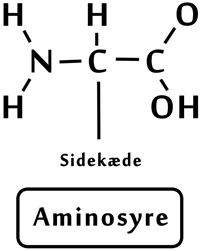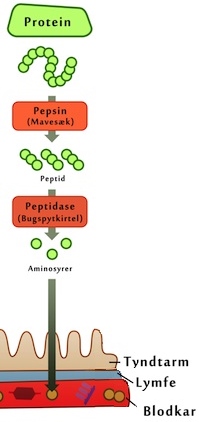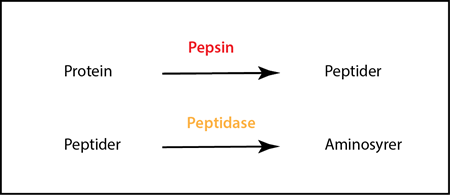What is proteins/protein synthesis?
This subpage about proteins belongs to Biotech Academy’s primary school project
The Body and the Diet
Proteins are used to provide energy to the body and are an important building block for our entire organism. Among other things, they transport fatty acids, iron and oxygen around the body and regulate many of the body’s processes.
Proteins are made up of long chains of amino acids (see Figure 2), the basic structure of which consists of the elements carbon (C), oxygen (O), hydrogen (H) and nitrogen (N) as Figure 1 shows. There are 20 different amino acids, eight of which are essential, and these cover the number of amino acids that we cannot form ourselves. This means that they must be supplied through the diet.
If the diet does not contain all the essential amino acids, protein synthesis may be impaired. Lack of essential amino acids is a major problem in developing countries and can lead to diseases such as kwashiorkor, where a child lacks proteins but gets enough energy. If the child does not get enough energy or protein, it is called marasmus.
In Denmark and in the western part of the world, there is no protein deficiency, but rather an overuse of proteins. However, vegetarians must be careful to get enough protein as they do not eat meat.





